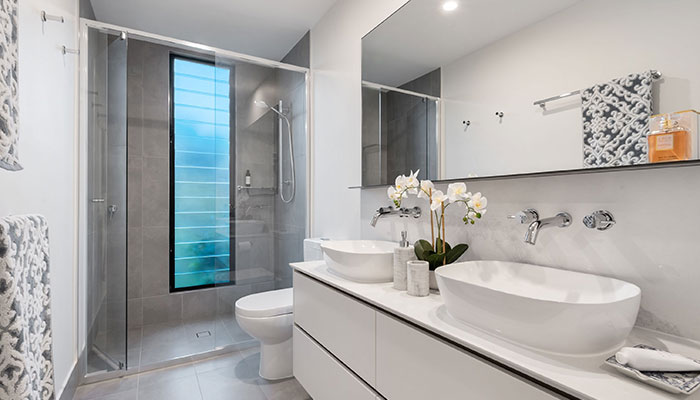Almost everyone is bound to have their own opinion involving How can you handle tenant plumbing issues effectively.

Taking care of plumbing problems in rental buildings efficiently is vital for keeping tenant fulfillment and maintaining the residential or commercial property's value. Whether you're a property manager or a property supervisor, recognizing just how to address these common issues can conserve you money and time while making certain conformity with legal responsibilities. Here's a step-by-step guide on exactly how to manage pipes concerns in rental properties.
Establish Clear Communication
Motivate renters to report any type of plumbing problems as soon as they happen. Offer several communication channels such as phone, email, or a renter website to make it simple for them to reach out. Trigger reactions to these reports can avoid minor issues from escalating into major problems.
Educate Tenants
Enlighten your lessees concerning what comprises a pipes emergency and what does not. Offer guidelines on how to handle small concerns themselves, such as utilizing a plunger to unclog a commode. Likewise, inform them about what they need to stay clear of taking down drains to avoid clogs, such as oil, coffee grounds, and non-biodegradable products.
Routine Upkeep
Carry out a regular upkeep timetable for all pipes systems in your leasing homes. Regular checks can aid recognize and fix problems like leakages, sluggish drains, or rusty pipes before they come to be serious. Think about working with a professional plumbing to evaluate the residential or commercial properties every year or semi-annually.
Quick Feedback to Emergency Situations
Have a strategy in place for reacting to plumbing emergency situations. This need to consist of having the contact details of trustworthy plumbing solutions that provide 24/7 emergency situation repair work. Quick activity is important to minimize damages in situations like ruptured pipelines or serious leakages.
Paper Everything
Maintain detailed documents of all reported pipes problems and the activities taken to solve them. Documentation must consist of dates, summaries of the problem, communication with lessees, and receipts from service providers or plumbings. This details can be important for insurance policy claims, tax obligation reductions, and legal security.
Usage Qualified Professionals
Constantly use accredited and insured professionals for significant pipes fixings and installations. This makes sure that the job depends on code and can help prevent responsibility problems in case of crashes or more damage. It also guarantees lessees that repairs are being dealt with skillfully.
Understand Lawful Responsibilities
Be aware of your legal obligations relating to plumbing and general building upkeep. Most jurisdictions need proprietors to guarantee their residential or commercial properties are habitable and that all plumbing systems are in good working order. Failure to attend to severe problems immediately can bring about lawsuits from lessees.
Lessee Repayments
If a pipes concern calls for prompt focus and the tenant resolves the issue by themselves, have a clear plan in position for compensating expenses. Ensure tenants recognize they need to get previous authorization for higher-cost repair work unless it's an absolute emergency situation.
Preventive Upgrades
Think about updating older plumbing systems and components to much more modern, effective models. This can decrease the regularity and seriousness of pipes issues and lower lasting maintenance expenses. It's additionally a selling factor for possible renters that value upgrades and modern-day functions.
Occupant Move-Out Inspections
Conduct detailed pipes checks throughout move-out evaluations to ensure that any kind of problems are determined and addressed prior to a new tenant relocate. This avoids disputes with brand-new renters over pre-existing problems and makes sure the home is in leading condition.
Verdict
Dealing with plumbing concerns in rental properties requires a positive technique and excellent interaction with lessees. By staying on top of maintenance, responding quickly to emergency situations, and utilizing professional specialists, landlords can keep their residential or commercial properties in outstanding condition and keep excellent partnerships with lessees.
How to Handle Water Damage in a Rental Property
What is Water Damage?
Water damage is harm or destruction caused by water entering areas where it is not supposed to be. It can be caused by a variety of sources and can manifest in different ways. The most common examples of water damage include:
Leaking roof Plumbing leaks Appliance malfunctions Poor drainage Flooding Sewage backup Condensation Tenant negligence HVAC system issues Frozen pipes Is water damage dangerous?
Water damage itself is not inherently dangerous, but it can lead to various hazards and health risks if not promptly and properly addressed. The severity of these risks depends on the extent of the water damage, the source of the water, and how quickly it is mitigated.
Some potential dangers associated with water damage include structural damage, mold and bacterial growth, electrical hazards, water contamination, and pest infestations. In situations where mold and mildew have gone unaddressed, mold can start to develop within 24-48 hours of water exposure, and this can impose a serious health risk to tenants. In particular, mold spores and damp conditions can lead to respiratory issues and even make existing health problems worse, such as allergies, asthma, or immune disorders.
Water Damage in an Apartment - Who is Responsible?
If the water damage is caused by the tenant’s negligence, the tenant is responsible for the cost of repairs. If the water damage is caused by a defect in the property, the landlord is responsible for the cost of repairs. If the water damage is a result of natural causes, such as excessive rain, then the landlord is responsible, since the water intrusion likely occurred due to a defect in the property. Landlord Responsibility water damage in rental property
Since maintaining habitability is the landlord’s legal responsibility, landlords are responsible for any resulting structural damage caused by water damage. These structural damages may include damage to walls, roofs, ceilings, and flooring. If water damage has affected the rental property’s original structure, the landlord is responsible for repairing or replacing those materials. Therefore, landlords should have property insurance that covers the structural components of their rental property so that they can receive help with the costs of covered events.
Preventative measures can also help landlords avoid massive renovations. Preventative maintenance may include conducting regular inspections to identify and address potential water damage before it becomes a major and urgent problem.
If a landlord fails to meet their responsibilities regarding water damage, it can lead to legal disputes and potential liability. Tenants who believe their landlord is not addressing water damage issues in accordance with California law can seek legal advice or contact local housing authorities for assistance.
https://www.goodlifemgmt.com/blog/water-damage-in-a-rental-property/

We were brought to that report about How can you handle tenant plumbing issues effectively from someone on another web page. Those who liked our page kindly make sure you remember to pass it around. Thank you for taking the time to read it.